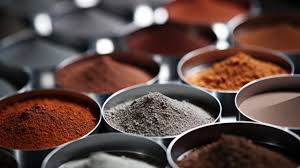Tungsten carbide and titanium are both celebrated for strength in modern applications like jewelry and tools. But their strengths differ fundamentally. Understanding these differences is key to choosing the right material.
(tungsten carbide vs titanium strength)
Tungsten carbide is not a pure metal. It’s a composite, made by bonding tungsten powder with carbon. This creates an incredibly hard material. On the Mohs scale of hardness, tungsten carbide ranks around 9.5, nearly as hard as diamond. This gives it exceptional scratch resistance. Your tungsten ring is unlikely to get scratched by everyday wear. It also boasts high wear resistance, making it excellent for applications like drill bits and cutting tools where surfaces face constant abrasion. However, this hardness comes at a cost: brittleness. Tungsten carbide can crack or shatter under a strong, direct impact. It’s strong against scratching but vulnerable to breaking.
Titanium is a strong, lightweight pure metal. Its strength lies more in toughness than extreme hardness. Titanium is highly resistant to fracturing under impact – it bends rather than shatters. This makes it incredibly durable against drops or knocks. It’s also significantly lighter than tungsten carbide, about half the weight for the same volume. Titanium is biocompatible and highly corrosion-resistant. While hard (around 6 on the Mohs scale), it’s softer than tungsten carbide and can scratch more easily over time, though high-quality alloys resist this well.
(tungsten carbide vs titanium strength)
In summary: Need extreme scratch and wear resistance? Tungsten carbide wins. Need impact resistance, lightness, and toughness? Titanium is superior. Both are strong, just in different ways. Choose tungsten carbide for surface durability, titanium for overall resilience and weight savings.
Inquiry us
if you want to want to know more, please feel free to contact us.

